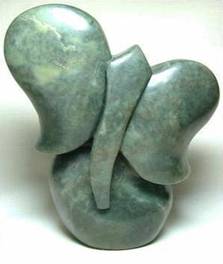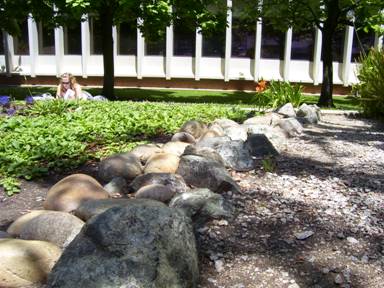|
Uses for Serpentinite
|
|
|
|
|
|
Serpentinite is a useful rock. As you can see from the pictures above, serpentinite can be carved and polished into a beautiful green stone. People mostly used to use serpentinite for sculptures, jewelry, and other decorative purposes (such as decorative building stones.) People have been using this stone because of its beautiful green color for many years. It wasn’t until the 20th century though, that serpentinite was really mined on a large scale. It was because of the newly found uses of asbestos.
Asbestos is a fibrous mineral that can be found in serpentine. Asbestos is a building material that was first used in the early part of the twentieth century. The first use of asbestos was to insulate steam engines. Asbestos is a very good insulator and is also very fire retardant. This made it a good material to use in house and building construction. It was only recently (1991) that asbestos was classified as toxic by the asbestos National Emissions Standard for Hazardous Air Pollutants, (NESHAP), and made illegal to use in construction. Certain types of asbestos have been identified as carcinogens. The small fibers that make up asbestos can become air born and are harmful for you to breathe in. You can still find asbestos in older buildings and homes.
photo by William Holland Here at Cal Poly you can find serpentinite table tops in Building 52. The serpentinite is not the signature green color because it has a slightly different chemical makeup (which makes it less precious), but it is still considered serpentinite. You can also find serpentinite rocks used as decoration in many of the planter boxes around campus.
|


 Carved Serpentinite Pictures from
Carved Serpentinite Pictures from 
